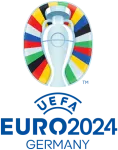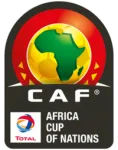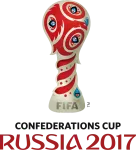- BETTING TIPS
- BETTING TIPS NAVIGATIONS
 Premier League
Premier League FA Cup
FA Cup League Cup
League Cup La Liga
La Liga Copa del Rey
Copa del Rey Super Cup
Super Cup Champions League
Champions League Europa League
Europa League Europa Conference League
Europa Conference League World Cup
World Cup Euro Championship
Euro Championship Nations League
Nations League Africa Cup of Nations
Africa Cup of Nations Copa America
Copa America International Friendly
International Friendly Confederations Cup
Confederations Cup Serie A
Serie A Coppa Italia
Coppa Italia Super Cup
Super Cup Bundesliga
Bundesliga Ligue 1
Ligue 1 DFB Pokal
DFB Pokal Super Cup
Super Cup Malaysia Super League
Malaysia Super League Coupe de France
Coupe de France Trophée des Champions
Trophée des Champions Pro League
Pro League
- Teams
- TEAMS NAVIGATIONS
 Premier League
Premier League FA Cup
FA Cup League Cup
League Cup La Liga
La Liga Copa del Rey
Copa del Rey Super Cup
Super Cup Champions League
Champions League Europa League
Europa League Europa Conference League
Europa Conference League World Cup
World Cup Euro Championship
Euro Championship Nations League
Nations League Africa Cup of Nations
Africa Cup of Nations Copa America
Copa America International Friendly
International Friendly Confederations Cup
Confederations Cup Serie A
Serie A Coppa Italia
Coppa Italia Super Cup
Super Cup Bundesliga
Bundesliga Ligue 1
Ligue 1 DFB Pokal
DFB Pokal Super Cup
Super Cup Malaysia Super League
Malaysia Super League Coupe de France
Coupe de France Trophée des Champions
Trophée des Champions Pro League
Pro League
- Fixtures & Results
- Fixtures & Results NAVIGATIONS
 Premier League
Premier League FA Cup
FA Cup League Cup
League Cup La Liga
La Liga Copa del Rey
Copa del Rey Super Cup
Super Cup Champions League
Champions League Europa League
Europa League Europa Conference League
Europa Conference League World Cup
World Cup Euro Championship
Euro Championship Nations League
Nations League Africa Cup of Nations
Africa Cup of Nations Copa America
Copa America International Friendly
International Friendly Confederations Cup
Confederations Cup Serie A
Serie A Coppa Italia
Coppa Italia Super Cup
Super Cup Bundesliga
Bundesliga Ligue 1
Ligue 1 DFB Pokal
DFB Pokal Super Cup
Super Cup Malaysia Super League
Malaysia Super League Coupe de France
Coupe de France Trophée des Champions
Trophée des Champions Pro League
Pro League
- Tables
- Tables NAVIGATIONS
 Premier League
Premier League FA Cup
FA Cup League Cup
League Cup La Liga
La Liga Copa del Rey
Copa del Rey Super Cup
Super Cup Champions League
Champions League Europa League
Europa League Europa Conference League
Europa Conference League World Cup
World Cup Euro Championship
Euro Championship Nations League
Nations League Africa Cup of Nations
Africa Cup of Nations Copa America
Copa America International Friendly
International Friendly Confederations Cup
Confederations Cup Serie A
Serie A Coppa Italia
Coppa Italia Super Cup
Super Cup Bundesliga
Bundesliga Ligue 1
Ligue 1 DFB Pokal
DFB Pokal Super Cup
Super Cup Malaysia Super League
Malaysia Super League Coupe de France
Coupe de France Trophée des Champions
Trophée des Champions Pro League
Pro League
- News
- News NAVIGATIONS
 Premier League
Premier League FA Cup
FA Cup League Cup
League Cup La Liga
La Liga Copa del Rey
Copa del Rey Super Cup
Super Cup Champions League
Champions League Europa League
Europa League Europa Conference League
Europa Conference League World Cup
World Cup Euro Championship
Euro Championship Nations League
Nations League Africa Cup of Nations
Africa Cup of Nations Copa America
Copa America International Friendly
International Friendly Confederations Cup
Confederations Cup Serie A
Serie A Coppa Italia
Coppa Italia Super Cup
Super Cup Bundesliga
Bundesliga Ligue 1
Ligue 1 DFB Pokal
DFB Pokal Super Cup
Super Cup Malaysia Super League
Malaysia Super League Coupe de France
Coupe de France Trophée des Champions
Trophée des Champions Pro League
Pro League
- Live ScoresLive
Hungary
Hungary| Country | : | Hungary |
| League | : | |
| Founded | : | - |
| Venue | : | Puskás Aréna |
| Coach | : | G. Jeremias (Hungary) |
Venue

Puskás Aréna
| City | : | Budapest |
| Capacity | : | 67,889 |
| Surface | : | Grass |
The Hungary national football team boasts one of the most storied and iconic histories in world football. Known for their technical ability and playing style, Hungary has been a footballing powerhouse in both the past and present. With rich traditions dating back over a century, Hungary’s national team has produced legendary players and achieved remarkable success on the international stage.
From their golden era in the mid-20th century to their competitive efforts in modern-day football, Hungary continues to be a respected team in international football competitions. The team’s passion for the game and their ability to produce exceptional talent has made them a proud representative of Hungarian football on the world stage.
Early History of Hungary’s National Football Team
Hungary's football journey began in the early 20th century, with the national team playing their first international match in 1902. The team quickly gained recognition for its technical skill and playing style, which stood out among European teams of the era. By the 1930s, Hungary had become a dominant force in international football, participating in and excelling at major tournaments.
Match Predictions
- Port Vale vs. Maldon & Tiptree Predictions & Betting Tips on Nov 02 - 23:00 PM
- Manchester City vs. Bournemouth Predictions & Betting Tips on Nov 03 - 00:30 AM
- Gainsborough Trinity vs. Accrington ST Predictions & Betting Tips on Nov 03 - 01:15 AM
- Tamworth vs. Leyton Orient Predictions & Betting Tips on Nov 04 - 03:30 AM
- Sunderland vs. Everton Predictions & Betting Tips on Nov 04 - 04:00 AM
Hungary's first major success came at the 1938 FIFA World Cup, where they finished in second place. This success laid the foundation for what would become one of Hungary's most glorious periods in football history.
The Golden Era: Hungary's Legendary Team of the 1950s
The 1950s marked the golden era of Hungarian football, with the national team becoming one of the most formidable teams in the world. Known as the "Mighty Magyars," this team, led by manager Gusztáv Sebes, included some of the most iconic football players in history.
-
Ferenc Puskás: Widely regarded as one of the greatest footballers of all time, Puskás was the heart and soul of the Hungarian national team in the 1950s. His incredible goal-scoring ability and leadership on the field made him a legend not just in Hungary but around the world.
-
Sándor Kocsis: Another key player in the golden generation, Kocsis was a prolific forward and an essential part of the Hungarian attacking force. He scored numerous goals in international competitions and was known for his aerial prowess and clinical finishing.
-
József Szilágyi: Szilágyi was an essential part of Hungary's defense during the golden era. His composure and tactical intelligence helped keep Hungary’s defense solid against the best teams in the world.
Hungary's 1954 FIFA World Cup campaign remains one of the most impressive in the team's history, where they reached the final. Although they lost to West Germany in a controversial match, Hungary's 8-3 victory over Brazil in the semi-finals has been regarded as one of the greatest performances in World Cup history.
Hungary’s Achievements and Challenges
After the golden era of the 1950s, Hungary experienced a decline in form in the following decades, with the team failing to achieve the same level of success in international tournaments. However, Hungary continued to produce talented players, and the team remained competitive in European and World Cup qualifiers.
Hungary's national team had its share of ups and downs throughout the years, with notable performances in the 1960s and 1970s, but the team struggled to consistently qualify for major tournaments like the FIFA World Cup and UEFA European Championship.
Despite these challenges, Hungary has had several successful moments in international football, most notably during the 1964 UEFA European Championship, where they reached the semi-finals and earned a respectable place. The team also came close to qualifying for several major tournaments, but often found themselves edged out by stronger teams.
Key Players in Modern Hungarian Football
Hungary’s footballing history is built upon a foundation of incredible talent, and the modern era has continued to produce excellent players who have gone on to shine in top European leagues. These players have kept Hungary’s competitive edge alive and have made significant contributions to the national team.
-
Zoltán Gera: One of the most well-known figures in recent Hungarian football, Gera was a key player for Hungary for many years. His leadership and creativity in midfield were vital for the team during their campaigns in the 2000s and early 2010s.
-
Balázs Dzsudzsák: Another important figure in Hungarian football, Dzsudzsák has been an instrumental player for the national team for more than a decade. His powerful left foot and ability to deliver excellent crosses have made him one of Hungary’s most dangerous players on the attack.
-
Ádám Szalai: A versatile forward, Szalai has been a key player in Hungary’s forward line in recent years. Playing for top European clubs, Szalai’s leadership and goal-scoring ability have made him an essential part of the national team.
-
Dominik Szoboszlai: A young talent rising through the ranks, Szoboszlai has become one of Hungary’s brightest stars. As a midfielder with excellent vision and technical ability, Szoboszlai has played a significant role in Hungary's recent successes, including their qualification for the Euro 2020 tournament.
Hungary’s Playing Style and Tactics
The Hungarian national team has always been known for its technical football, with an emphasis on skillful passing and a tactical approach to the game. Historically, Hungary’s playing style has been a combination of attacking flair and defensive solidity. In modern football, Hungary continues to employ a tactical approach with a solid defensive structure, while also being capable of transitioning quickly to counter-attacks.
Under various managers, Hungary has focused on youth development and integrating young talents into the senior team. This emphasis on nurturing young players has helped the team remain competitive in the modern footballing world.
Hungary’s Recent Performances and Future Prospects
In recent years, Hungary has shown significant progress in international football. Their qualification for the UEFA Euro 2020 was a testament to their growth, as they competed against some of Europe’s best teams and earned impressive results. Hungary’s youthful squad, led by Szoboszlai, has shown promise and potential, with the team looking forward to future competitions.
As Hungary continues to develop its talented players and build a strong team, the nation remains hopeful that they can once again qualify for major international tournaments and perhaps even make a deeper run into the latter stages of the competition.
Conclusion
Hungary’s national football team has one of the richest footballing histories in Europe, with incredible achievements in the 1950s and ongoing contributions to world football. While they may not have consistently secured major tournament victories in recent decades, Hungary’s passion for football and ability to develop top-class players ensures that they will always remain a competitive side in European football. With the continued rise of young stars like Szoboszlai, Hungary’s future in international football is full of promise, and the national team looks set to make its mark on the global stage once again.
News & Updates


